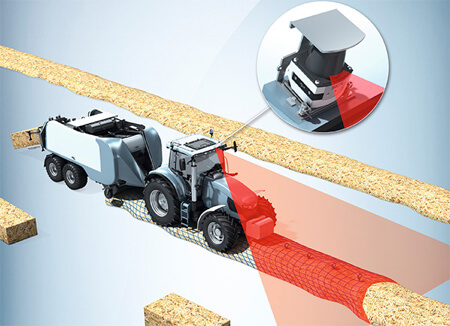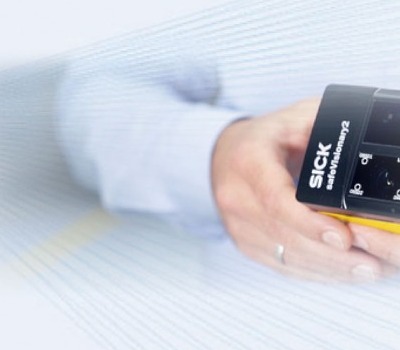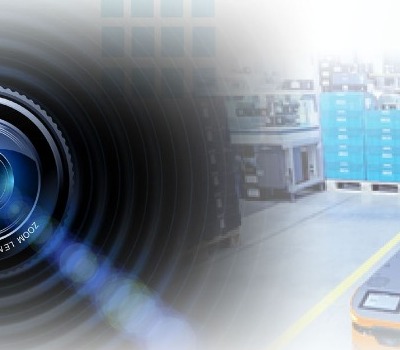
Driving assistance system for agricultural harvesting vehicles
Automation for a better yield

Crop harvesting will always be an activity in which every helping hand is appreciated.
The solutions for improving the efficiency of the harvesting process are therefore like a seed that’s ready to grow. One example of this “technological seed” is the WGS (Windrow Guidance System) from SICK.
Windrow detection by the tractor
After cutting hay and other crops, the production is stacked in windrows with a hay-turning machine.
Then, to collect the product with a forage harvester or feed it into a baler, the tractor must be driven as efficiently as possible over the windrow. Holes, curves, and variable windrow heights are all irregularities that can lead the mobile processing machines to collect too much material and get clogged or filled up inefficiently.
The result is a loss of time and a great deal of work required to reposition the machine — a particularly unfortunate scenario during the harvest, with its often-tight schedules and the sometimes-unpredictable climate.
WGS driver assistance system — the smart harvest assistant
Previously, the driver of the farm equipment was required to manoeuvre the vehicle so that the windrows were perfectly collected, crushed, or pressed into round or square bales that could be transported and stored even when windrow volumes were varied.
Now, however, the driver has a smart harvest assistant in the form of the WGS. The system consists of a Tim351 2D LiDAR sensor (as well as a 2D laser scanner) and an integrated windrow detection software application that provides its measurement results directly to the vehicle’s automation system while processing the machine’s guidance and speed information. The LiDAR sensor is mounted on the roof of the driver’s cab and sweeps the ground in front of the vehicle perpendicular to the direction of movement. From the collected data, the WGS first generates ground profiles, then calculates the position of the windrow in relation to the vehicle and follows the profile of the windrow. By using the collected machine movement data, the system detected the windrow on which it records and tracks the position.
Equipped with this information about windrow trajectory, the vehicle control system can automatically steer the tractor along the windrow and manoeuvre it in the ideal position to collect the material. At the same time, the windrow volume calculations provide the necessary basis for automatic speed adjustment — faster movement for small windrows, and slower movement for larger windrows.
An accessible and user-friendly system
The obvious advantages of driver assistance systems for agricultural machines and processes are encouraging more and more users to integrate systems such as the WGS in their vehicles.
One major advantage is that the complete processing of the measurement data is carried out in the WGS sensor itself, and a CAN bus provides the measurement data to the automation system of the tractor or combine harvester. The automation system uses the results without any additional processing directly on the assistance platform dedicated to lateral control and speed.
A great relief for drivers and a more efficient use of the vehicle’s capacity
The WGS removes much of the burden from drivers. Particularly during long work days, this ensures that the driver of the vehicle is free from stress. The system prevents costly and time-consuming mistakes in the forage harvesters or balers while optimizing their use and reducing the time spent working in the field.
Blog posts




